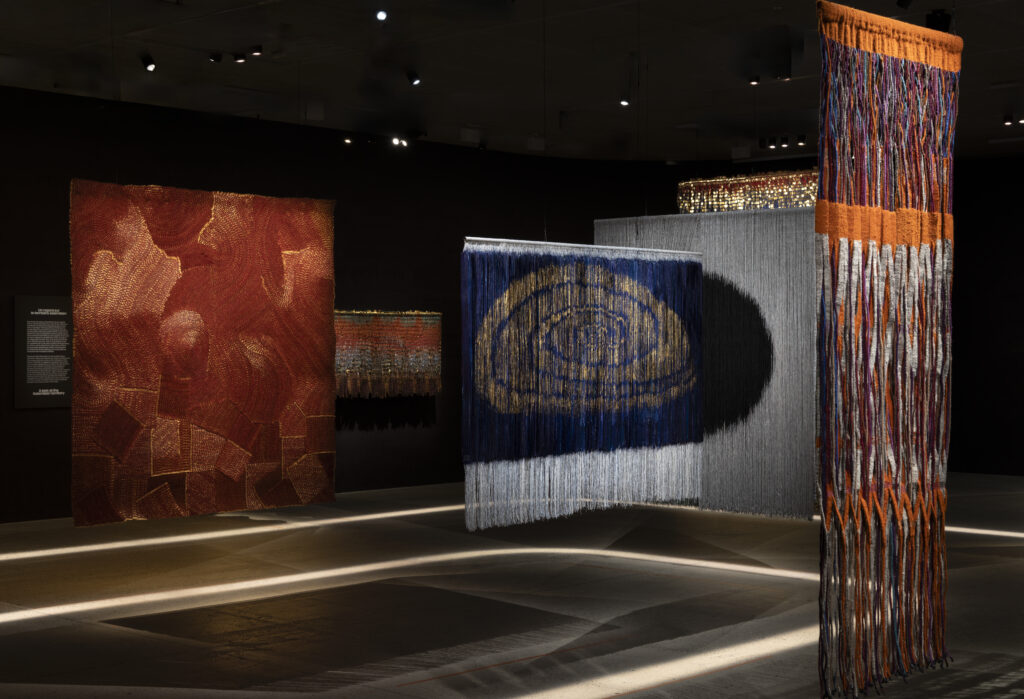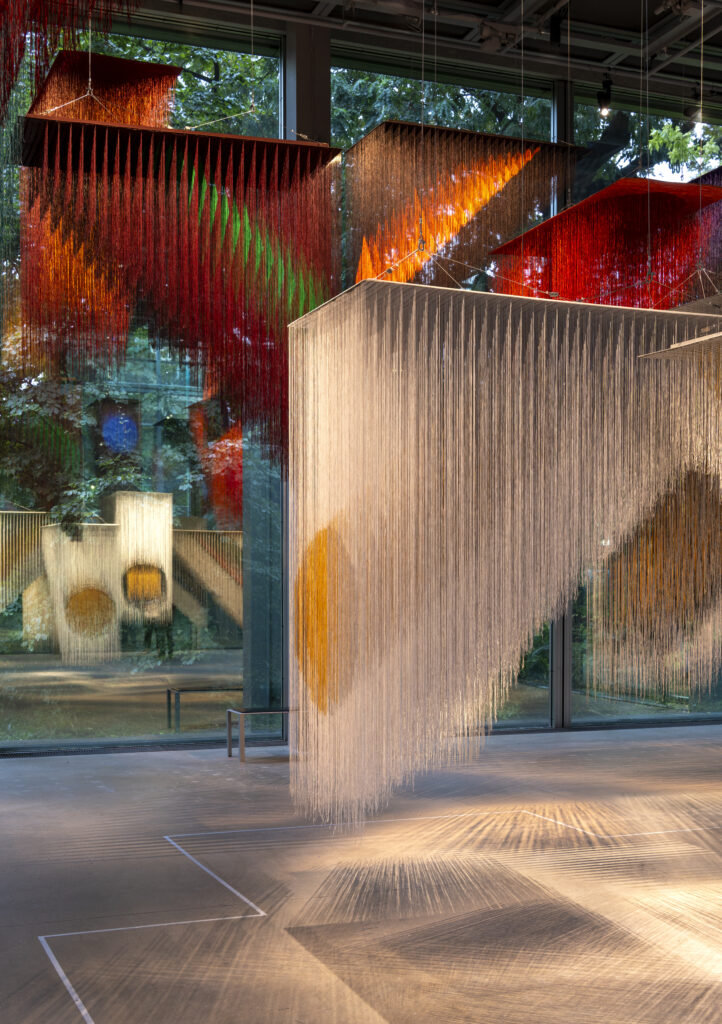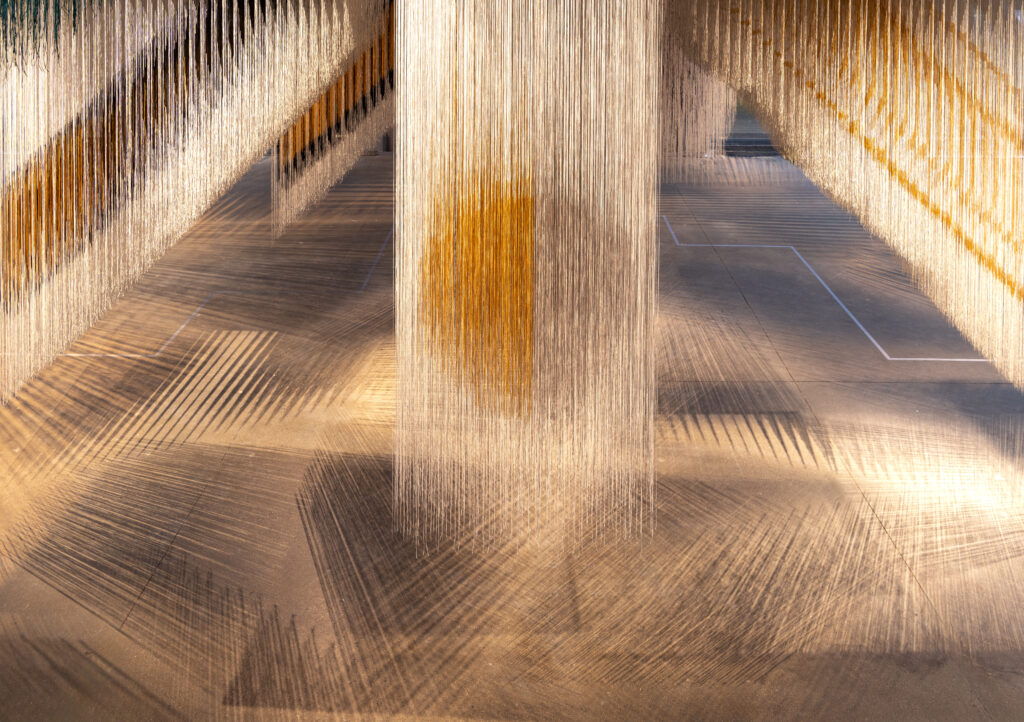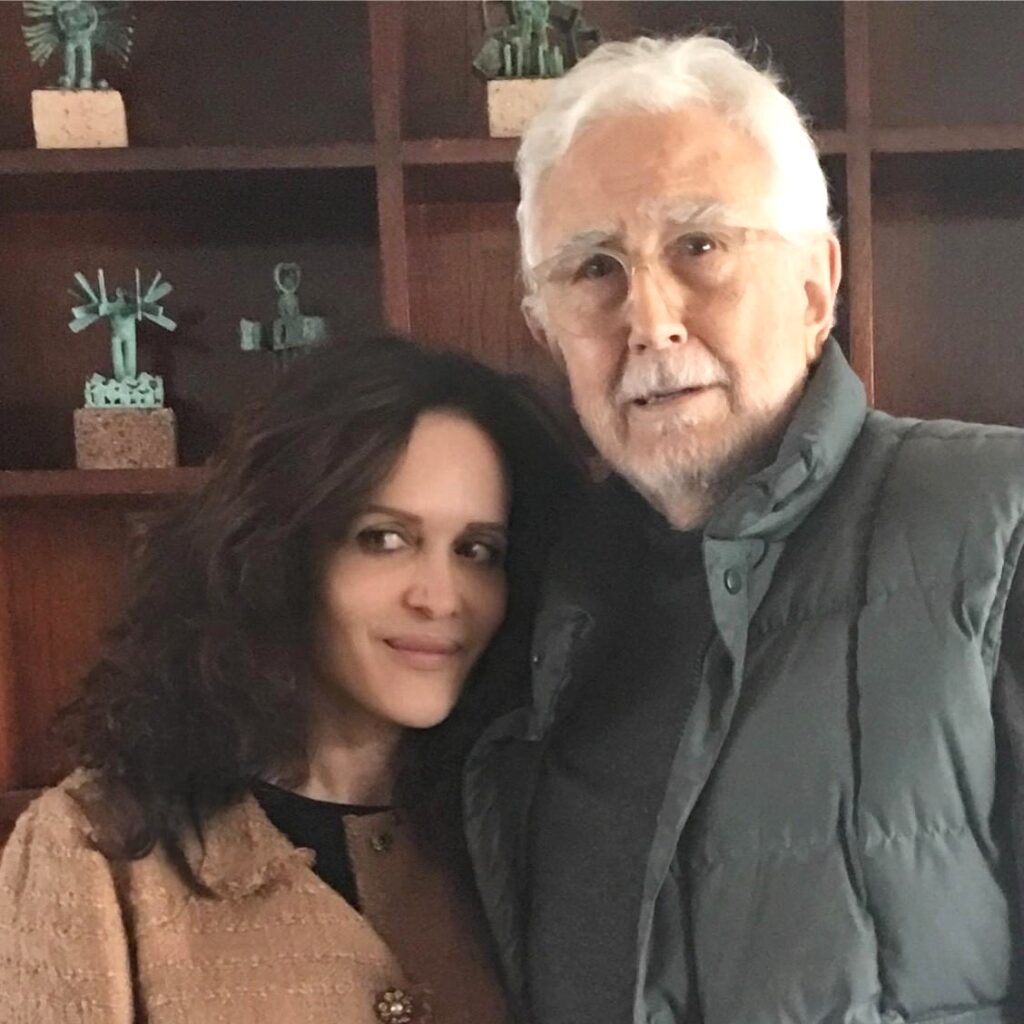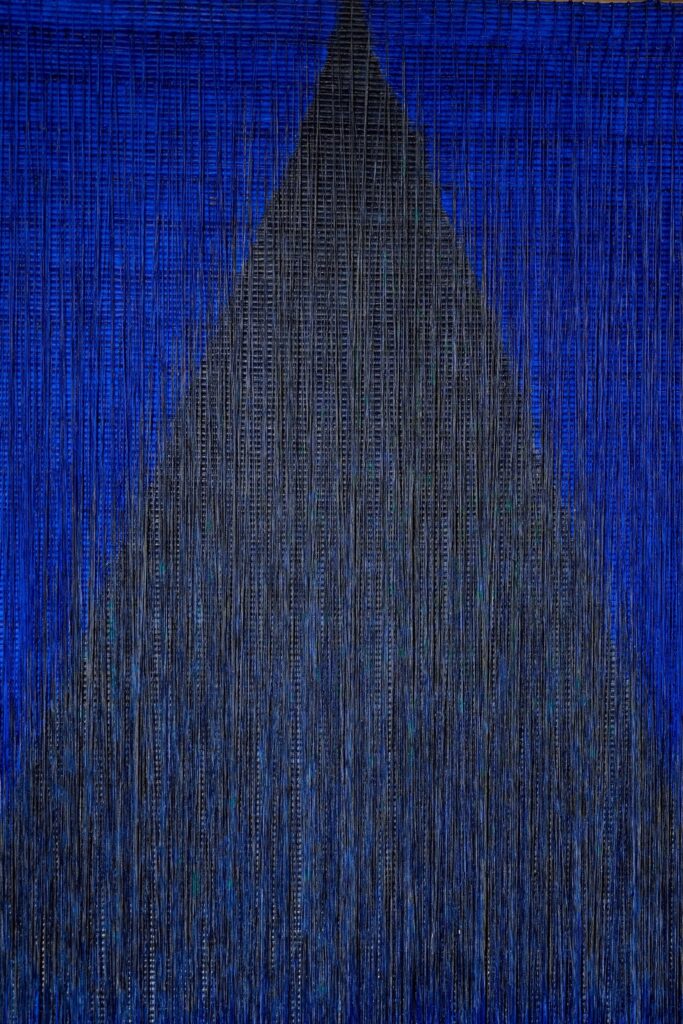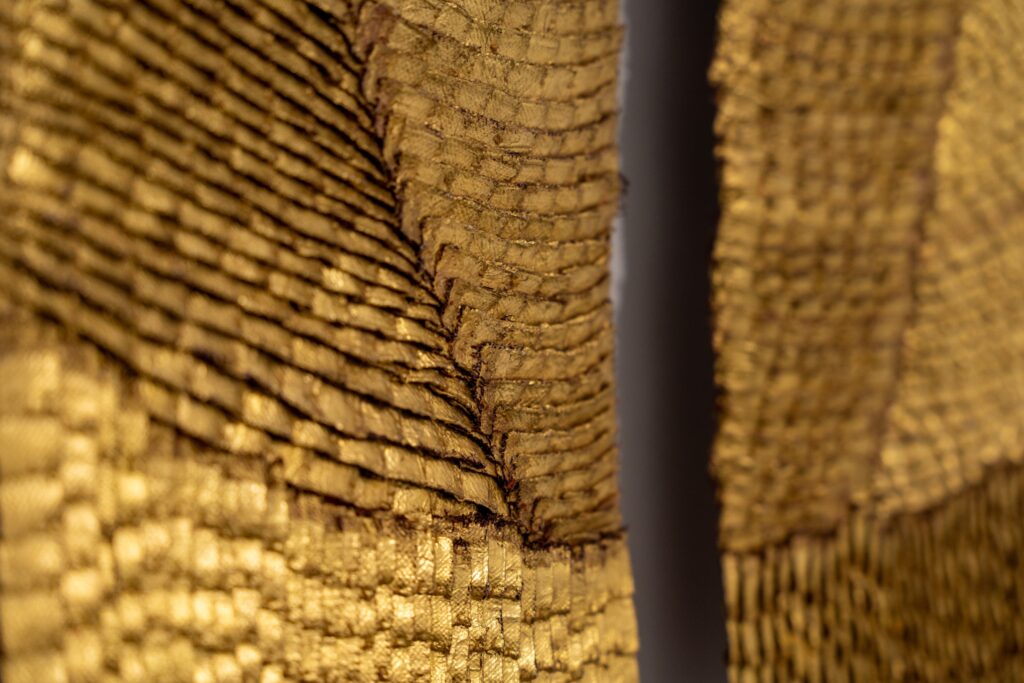
I will never forget my visit to the studio of Colombian textile artist Olga de Amaral (b. 1932) and her husband Jim in Bogotá during the fall of 2017. It was certainly a turning point for me, as it was the first time that I understood and saw textile art in a way I never had before. Amaral is one of the world’s most celebrated fiber artists who has been known for introducing fiber as a powerful expression of contemporary art, and her work is breathtakingly beautiful. She has been loosely associated with the so-called Textile Art Movement of the 1960s and 1970s when artists began to explore the intersection of art and craft, redefining fiber art and removing it from the arena of decorative arts. In fact, when Amaral lived in New York during the 1960s, she met with Eileen Vanderbilt, founder of the World Crafts Council, and began showing her work in the US while launching a global career. Since that visit, I have seen her tapestries in museums, galleries, and exhibitions—but only ever one at a time and never as a group.
When I arrived at Paris to attend the art week, I loved hearing from everyone around me that Olga de Amaral’s new exhibition at the Fondation Cartier—her first major European retrospective—is the best show in town, and I certainly agree. There, in the Jean-Nouvelle designed masterpiece of transparency (completed in 1994), her monumental, three-dimensional tapestries could not appear more vibrant, dramatic, and alive. They depict landscapes of the mountains and valleys, bringing Amaral’s native and tropical soil to the heart of Paris’ Rive Gauche. Exemplifying the way in which she has brilliantly blurred the lines between design, crafts, and architecture when shifting textiles from crates to art. The installation at the Fondation Cartier allows the viewer to inspect the works closely and to explore the multiple techniques that turn threads into abstract expressive, three-dimensional sculptures.
The retrospective follows Amaral’s work from the 1960s to the present, offering a perspective on her career while following the spectacular evolution of her oeuvre. As a graduate from the Cranbrook Academy of Art—the world’s most radical and modernist art school of the mid-century where she studied fiber art from 1954 to 1955—she felt that she, in her words, “loved color as though it were something tangible.” It was there that she was brought into the heart of both modernism and the American Abstract Expressionism Movement. Upon returning to Colombia, she began to connect the dots and merged the modernist color theory with its geometric conception and compositions, and local Colombian textile traditions, portraying the vivid landscape surrounding her home in Bogotá—the rocks, streams, hills, mountains, and clouds—in her tapestries. That shift from the geometric to the natural has brought more movement to her work. I am in love with the work in gold and silver, where Amaral references religious, ceremonial, and pre-Hispanic cultures, applying gold and silver leef on cotton. I find the juxtaposition of the humble fiber with richness of the gold leaf particularly intriguing.
While this exhibition teaches us about the evolution of the work of one of the world’s most celebrated and influential fiber artists, its most powerful aspect is the experience and the way in which architecture enhances art.

